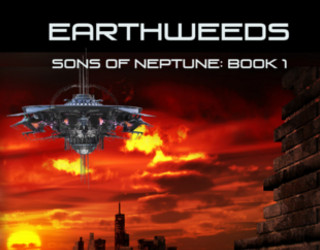I’ve been evaluating the quality of my book reviews and realized that most of my arguments for whether or not a book is awesome, have gone something like this: “Two days have passed and I’m still thinking about that book. Did I like it? Yes. Why did I like it? Well this thing was cool. And it had this in it, and I like that. Blog, blog, blog, etc.” And for a while, this was enough for me. But lately I’ve been less and less satisfied with novels and short stories that I’ve read, and even less satisfied with my ability to discuss why. Immediately, my reaction was to look at books and authors that I really enjoyed and try to figure out why I liked them. The problem was, I couldn’t figure out why I liked them and not other things which had similar if not identical elements. My logic was something like: “I like these books about robots and not these books about robots. But they both have Robots! What gives?” I’ve realized that I’ve been identifying what the scholars would call ‘Items and Icons’ (Norton Book of Science Fiction). What I’ve been ignoring, is what I think authors might call ‘Craft’ (sorry no reference here). Sure I’ve written posts on which tropes I enjoyed and which I would rather see fall by the wayside (see my 10 Commandments of New Fantasy posts here & here). I’m familiar with some of the plot structures common to Sci-Fi & Fantasy such as The Hero’s Journey etc.
However, I still felt that these were some very basic elements of ‘Craft’ if they could even be considered that at all. I needed to know more. I probably should have come here to Amazing Stories first, there are a plethora of wonderful writers that populate the links of this website and the more I read, the more I realize this fact. However, I turned to a book called Writer’s Workshop of Science Fiction & Fantasy. It was here that I first began to consider a Story’s beginning with any sort of seriousness. After reading the chapter on ‘beginnings’ from WWoSFF and several posts on this very website, I’ve distilled my notes down into what seem to be 3 qualities of a good beginning:
1) Has to set the story up as SF
2) Should Frame the story in some way
3) Don’t start at the Beginning
4) Need to ask questions which the reader must read to answer.
Well, I guess now it seems like it might be appropriate to explain what I mean and look at some examples (I’ll try to do books I’ve read, or books I’m about to read, or books that just happen to be on my shelf, but some examples I might steal from these WWoSFF and the articles I mention before; the links of which are here:
A) How to Begin a Short Story by Geoffery James.
B) Make your Openings Count & How to Hook Your Reader and Deliver by Nina Munteanu.
C) In the Beginning… by Ricky L. Brown.
You guys rock!

Setting up the story as SF –
When thinking about setting up the story as SF, the idea that really captivated my mind was that of the Science fiction Sentence. This idea comes from the WWoSFF (and probably somewhere else before that) but is defined in that work as: “. . . a statement that isn’t true in our world but is true in the science fiction world at hand.”(pg.26). The example WWoSFF gives is from Philip Jose Farmer’s “Sail On! Sail On!” which I’ve not read but it still seemed be understandable. It reads: “Friar Sparks sat wedged between the wall and the realizer”.
Uh what? Obviously, we have no idea what a ‘realizer’ is but Friar Sparks, who exists in the world of the story does. So . . . I guess the sentence makes sense in that world even if we don’t. Mission accomplished.
WWoSFF mentions the start of a story, Michael Bishop’s “Rogue Tomato”, which begins:
“When Philip K. awoke, he found that overnight he had grown from a reasonably well shaped, bilaterally symmetrical human into… a rotund and limbless body circling a gigantic, gauzy red star. In fact, by the simple feel, by the total aura projected into the seeds of his consciousness, Philip K concluded that he was a tomato. A tomato of approximately the same dimensions and mass as the planet Mars.”

Personally, I feel that this is a great opening for many reasons, but it certainly fits the mold of a Science Fiction Sentence (or a couple). It’s humorous, references Philip K. Dick and Kafka! (Somebody should write an article about Kafka and SF. Geoffrey James wrote about him in his article too. Guy can start a story.) But also, it posits something that is obviously not true in our world, but true in the story world.
I looked at a short story I really enjoyed, Chris Willrich’s The Sword of Loving Kindness. This story sticks out in my mind for many reasons, but when I looked re-read the beginning, I realized that it met the same criteria if in a slightly less obvious way. It reads:
“One storm-lashed sunset in the Eldshore’s antique capital, beneath Castle Astroble’s crumbling perch and near the Zodiac Coliseum’s bloody stones, Guant and Bone scaled Heaven’s Vault, there to make a hellish deposit”
Clearly, we’ve got some questions at the beginning of this story(more on questions later). But what’s the thing, or things, that aren’t true in our world? Surely some character named Guant and another named Bone, could deposit something into a vault. I think it’s the names of the places which are supposed to transport us out of our normal everyday life, and into the fantasy. Eldshore does not really exist. Nor does Castle Astroble or Zodiac Coliseum. To me this seemed very important to note as I think many fantasies rely on this type of opening. In this case though, I think the sheer number of place names which are dropped in the beginning are supposed to be somewhat humorous or satirical. At least that’s the way I’m reading it. Moving on!
Framing the Story –
Yup. Apparently, you’ve got to know your destination before you start. Sort of blows the whole writing-as-a-journey concept out of the water (although I suspect writers still experience a journey if not always in terms of plot). I think, of the 4 qualities I’ve distilled thus far, this is the one I’m convinced of the least. The idea here is that you can, and should, leave subtle clues as to the resolution of the story in the very opening. Not obvious clues that will give away the ending, but subtle things that when read again, you can see that it was there the whole time. I think that this is possible, and an effective tool for many writers who have this in mind, but I don’t believe that it is necessary to create a great beginning. It’s been difficult for me to think of an example but I’ll take my cue from Robert Jordan and his beginning of The Wheel of Time:
“The Wheel of Time turns, and Ages come and pass, leaving memories that become legend. Legend fades to myth, and even myth is long forgotten when the Age that gave it birth comes again. In one Age, called the Third Age by some, an Age yet to come, an Age long past, a wind rose in the Mountains of Mist. The wind was not the beginning. There are neither beginnings nor endings to the turning of the Wheel of Time. But it was a beginning.” -WoT
I do believe this beginning frames the story and probably the larger narrative of the series (although still haven’t made it through yet). What’s interesting for me to note is that there aren’t any plot events within this opening that I’m able to discern. Yes there is a wind blowing and perhaps this is a metaphor for a larger migration of troops or people or culture or ideas which we will see later as actual events but what’s really being accomplished in this opening, is we are getting a sense for the major thematic arc of the story. Getting a sense of the transitory nature of the world.
Intermission
Well, I think that’s all I have for now. I’ll be back next week to discuss Starting Just Before the Middle and Asking Questions in your Opening. Hope this post wasn’t to boring! Tomato!











1 Comment